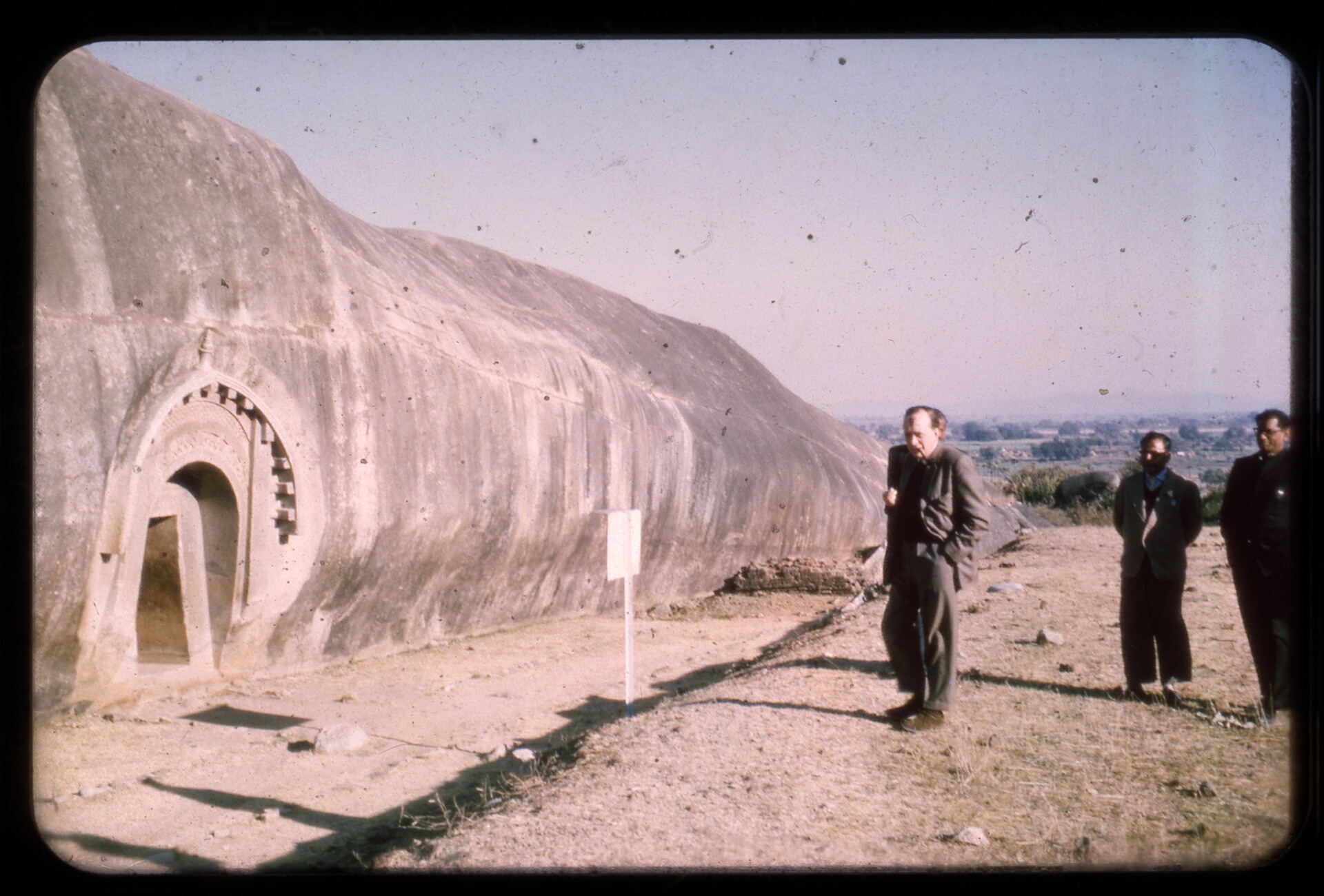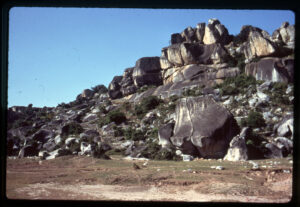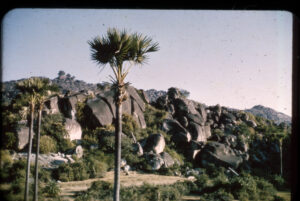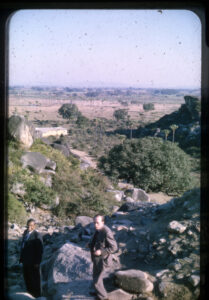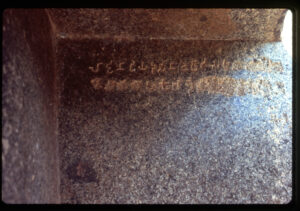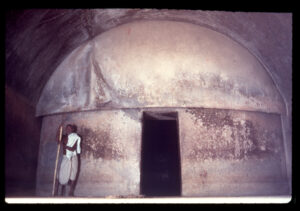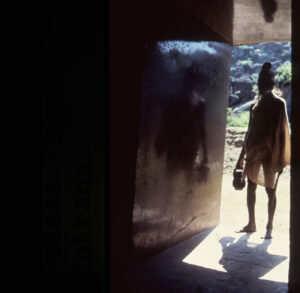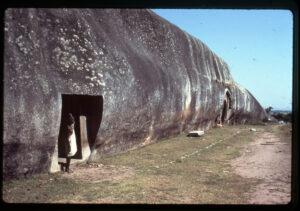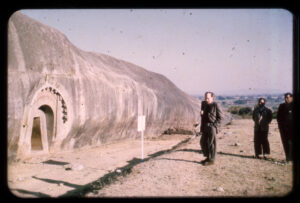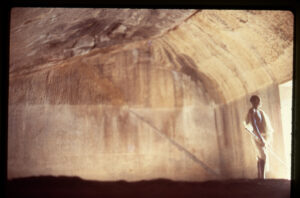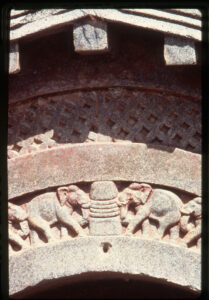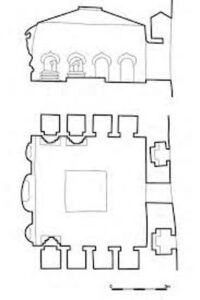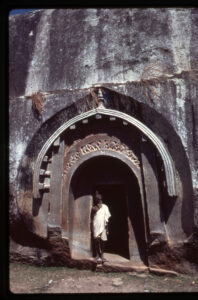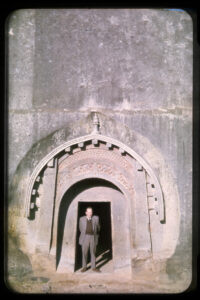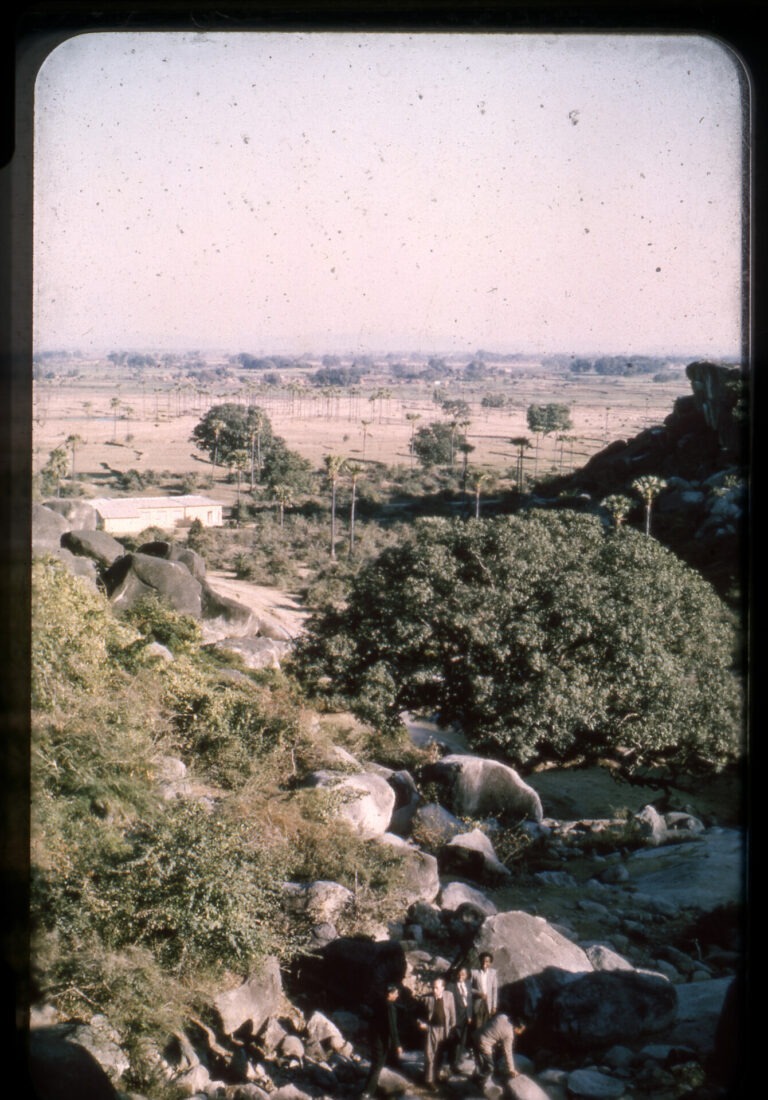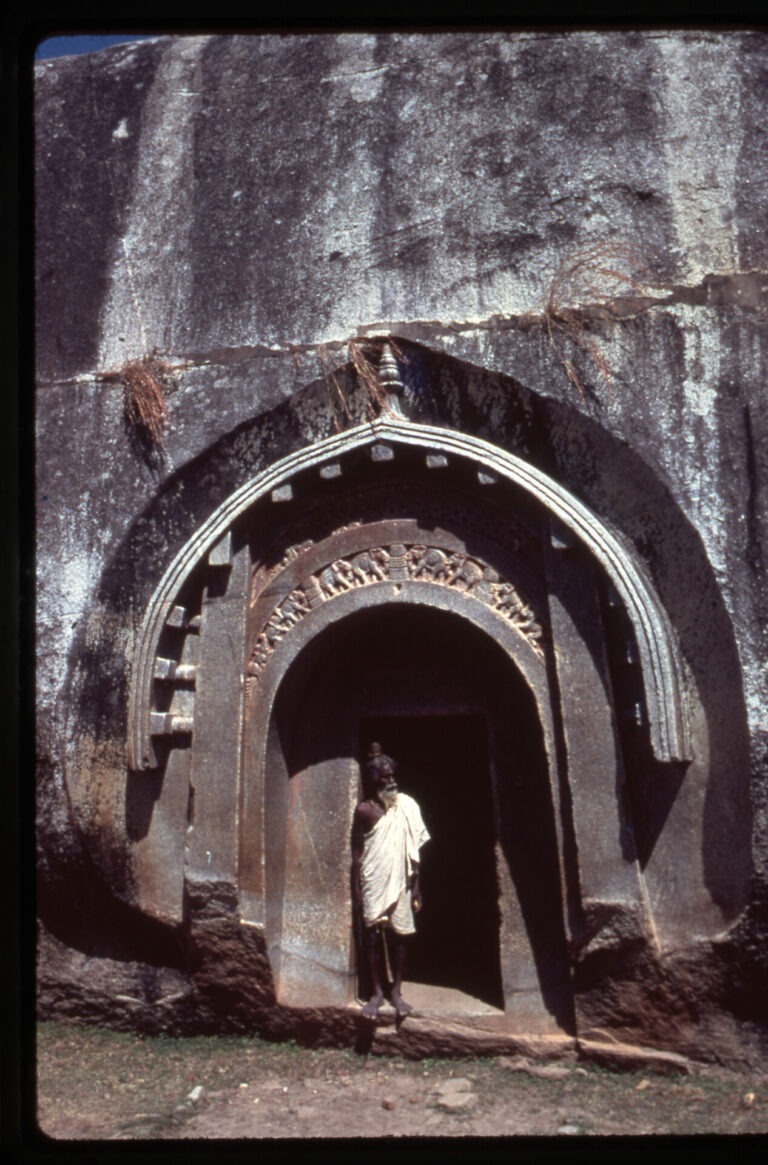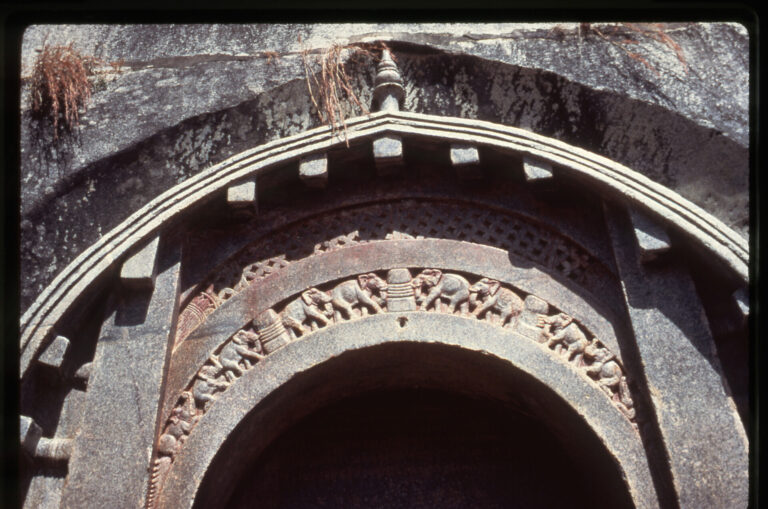The caves date from the 4th to 2nd centuries BCE and are the oldest surviving example of rock-cut architecture in the Indian subcontinent.
Barabar: Sudama Cave, Asoka’s inscription in entrance, partly defaced but still legible, dedicating the cave to Ajivika ascetics. The Ajivikas were one of several monastic orders of seekers after knowledge in ancient India. Now extinct, the Ajivika order was the subject of Basham’s PhD thesis under the guidance of L.D. Barnett, subsequently published as History and Doctrine of the Ajivikas: A Vanished Indian Religion (London, 1951).
Barabar: Sudama Cave, entrance showing the ‘Mauryan polish’ on rock, rendering it to mirror-like shine. The ascetic posing for Basham’s photos indicates the possibility of ongoing occupation of the site in the 1970s. Google Maps shows the existence of Saivite temple ‘Vanavar Shiv Mandir’ and an ascetic monastery (Sanyasi Ashram) within the immediate vicinity of the Barabar Caves.
Early development of sculpture, bas-relief of elephants adoring stupa (this is the aniconic phase of early Buddhism which eschews humanoid representation of the Buddha, preferring instead symbols such as the stupa, bodhi tree and sometimes, footprints of the Buddha as symbolic evocations. Note the extraordinary naturalism in rendering the bodies of the elephants. See also the band of latticework and wooden beam structure carved into the rock, both in the manner of timber structures that would have been contemporaneous with the caves.
Barabar: Sudama Cave, Asoka’s inscription in entrance, partly defaced but still legible, dedicating the cave to Ajivika ascetics. The Ajivikas were one of several monastic orders of seekers after knowledge in ancient India. Now extinct, the Ajivika order was the subject of Basham’s PhD thesis under the guidance of L.D. Barnett, subsequently published as History and Doctrine of the Ajivikas: A Vanished Indian Religion (London, 1951).
Two learned men posing at the entrance of Lomas Rishi cave.
The sanyasin (ascetic) in this image is very likely the same one posing against the mirror-polished rock at the entrance of the Sudama cave earlier in this sequence. Basham is pictured in the same location, but clearly at a different time as evidenced by the change in vegetation growing along the horizontal rock cleft at the top of the chaitya arch.
Barabar is north of Gaya (Bodh Gaya) in Bihar, India
